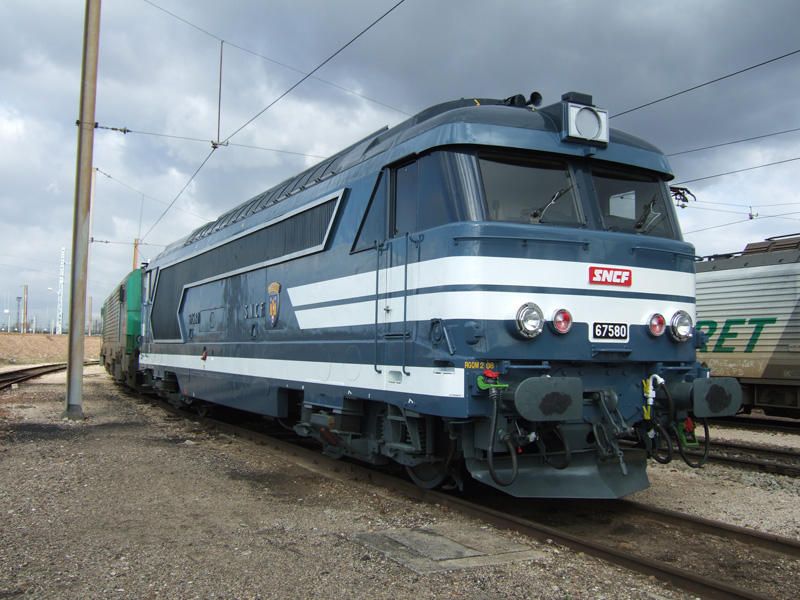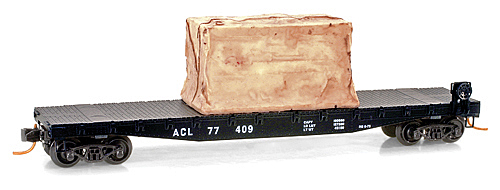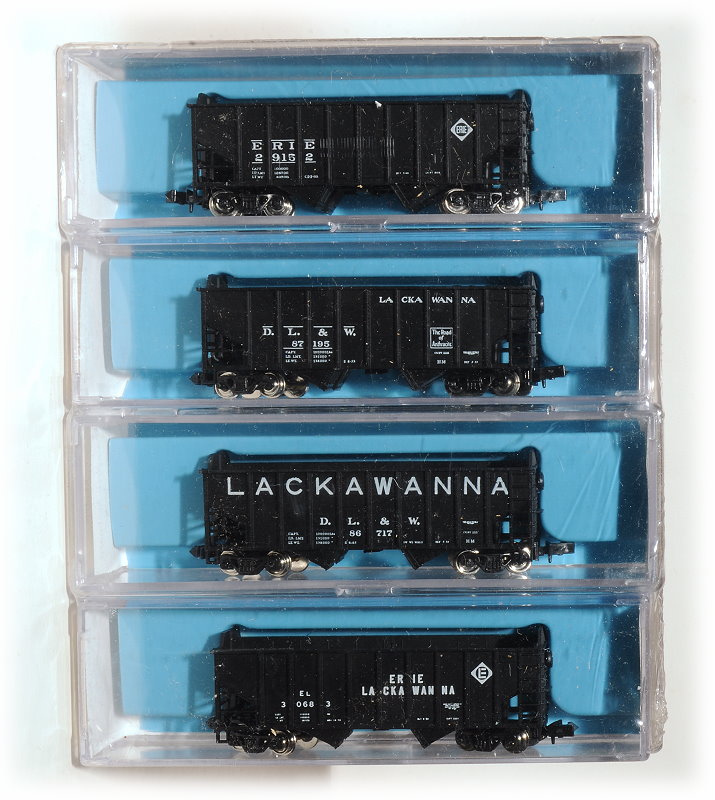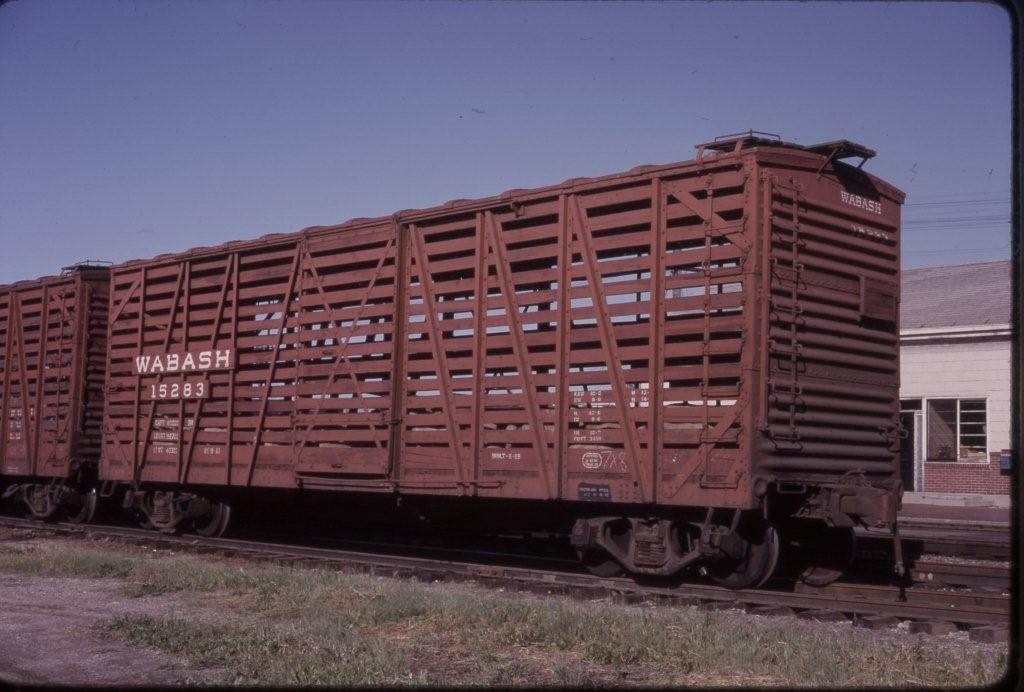Prototype History: Alonzo Mather, a Chicago clothing merchant who founded the Mather Stock Car Company, designed a new stock car in 1880 that was among the first to include amenities for feeding and watering the animals while en route. Mather was awarded a gold medal in 1883 by the American Humane Association for the humane treatment afforded to animals in his stock cars. Minneapolis' Henry C. Hicks patented a convertible boxcar/stock car in 1881, which was improved in 1890 with features that included a removable double deck. George D. Burton of Boston introduced his version of the humane stock car in 1882, which was placed into service the following year. The Burton Stock Car Company's design provided sufficient space so as to allow the animals to lie down in transit on a bed of straw.
Steel stock cars were in general use after the Second World War when steel became readily available.
From Wikipedia
Steel stock cars were in general use after the Second World War when steel became readily available.
From Wikipedia
Road Name History: 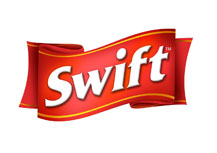 The Swift Refrigerator Line (SRL, also known as the Swift Refrigerator Transportation Company) was a private refrigerator car line established around 1875 by Chicago meat packer Gustavus Swift, the founder of Swift and Company. Ad for the line from 1921. Shows sample Swift cars at the top and a map of the distribution locations.
The Swift Refrigerator Line (SRL, also known as the Swift Refrigerator Transportation Company) was a private refrigerator car line established around 1875 by Chicago meat packer Gustavus Swift, the founder of Swift and Company. Ad for the line from 1921. Shows sample Swift cars at the top and a map of the distribution locations.
Swift hoped to develop an alternative to transporting live cattle across the Midwest. He experimented by moving dressed (cut) meat using a string of ten boxcars which ran with their doors removed, and made a few test shipments to New York during the winter months over the Grand Trunk Railway (GTR). The method proved too limited to be practical.
In 1878, Swift hired engineer Andrew Chase to design a ventilated car that was well-insulated, and positioned the ice in a compartment at the top of the car, allowing the chilled air to flow naturally downward. The meat was packed tightly at the bottom of the car to keep the center of gravity low and to prevent the cargo from shifting. Chase's design proved to be a practical solution to providing temperature-controlled carriage of dressed meats, and allowed Swift & Company to ship their products all over the United States, and even internationally, and in doing so radically altered the meat business.
The General American Transportation Corporation (GATX) assumed ownership of the line in 1930.
From Wikipedia

Swift hoped to develop an alternative to transporting live cattle across the Midwest. He experimented by moving dressed (cut) meat using a string of ten boxcars which ran with their doors removed, and made a few test shipments to New York during the winter months over the Grand Trunk Railway (GTR). The method proved too limited to be practical.
In 1878, Swift hired engineer Andrew Chase to design a ventilated car that was well-insulated, and positioned the ice in a compartment at the top of the car, allowing the chilled air to flow naturally downward. The meat was packed tightly at the bottom of the car to keep the center of gravity low and to prevent the cargo from shifting. Chase's design proved to be a practical solution to providing temperature-controlled carriage of dressed meats, and allowed Swift & Company to ship their products all over the United States, and even internationally, and in doing so radically altered the meat business.
The General American Transportation Corporation (GATX) assumed ownership of the line in 1930.
From Wikipedia
Brand/Importer Information: Con-Cor has been in business since 1962. Many things have changed over time as originally they were a complete manufacturing operation in the USA and at one time had upwards of 45 employees. They not only designed the models,but they also built their own molds, did injection molding, painting, printing and packaging on their models.
Currently, most of their manufacturing has been moved overseas and now they import 90% of their products as totally finished goods, or in finished components. They only do some incidental manufacturing today within the USA.
Important Note: The Con-Cor product numbering can be very confusing. Please see here in the article how to properly enter Con-Cor stock numbers in the TroveStar database.
Currently, most of their manufacturing has been moved overseas and now they import 90% of their products as totally finished goods, or in finished components. They only do some incidental manufacturing today within the USA.
Important Note: The Con-Cor product numbering can be very confusing. Please see here in the article how to properly enter Con-Cor stock numbers in the TroveStar database.
Item created by: gdm on 2016-12-09 13:47:37. Last edited by CNW400 on 2020-06-15 10:16:30
If you see errors or missing data in this entry, please feel free to log in and edit it. Anyone with a Gmail account can log in instantly.
If you see errors or missing data in this entry, please feel free to log in and edit it. Anyone with a Gmail account can log in instantly.






